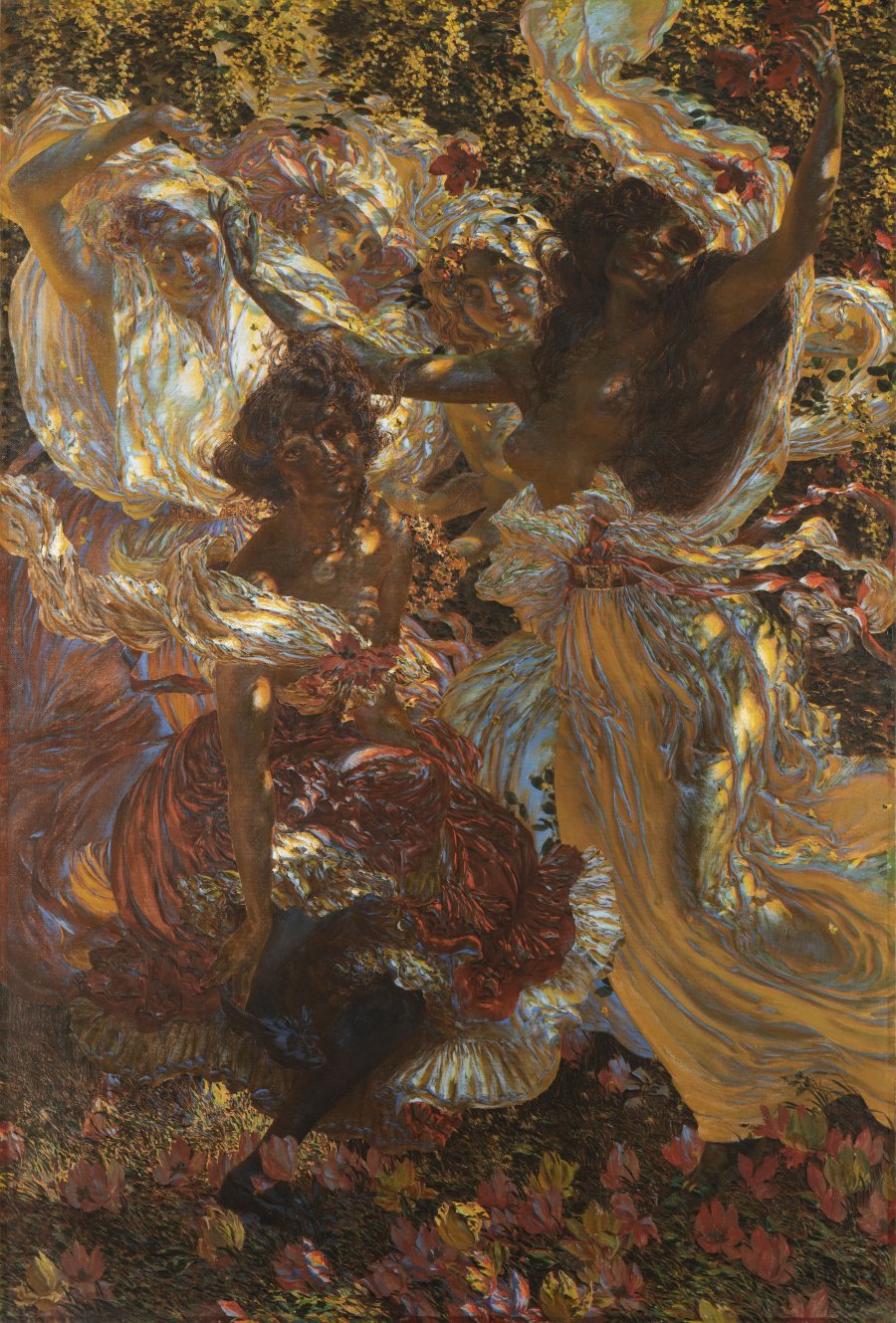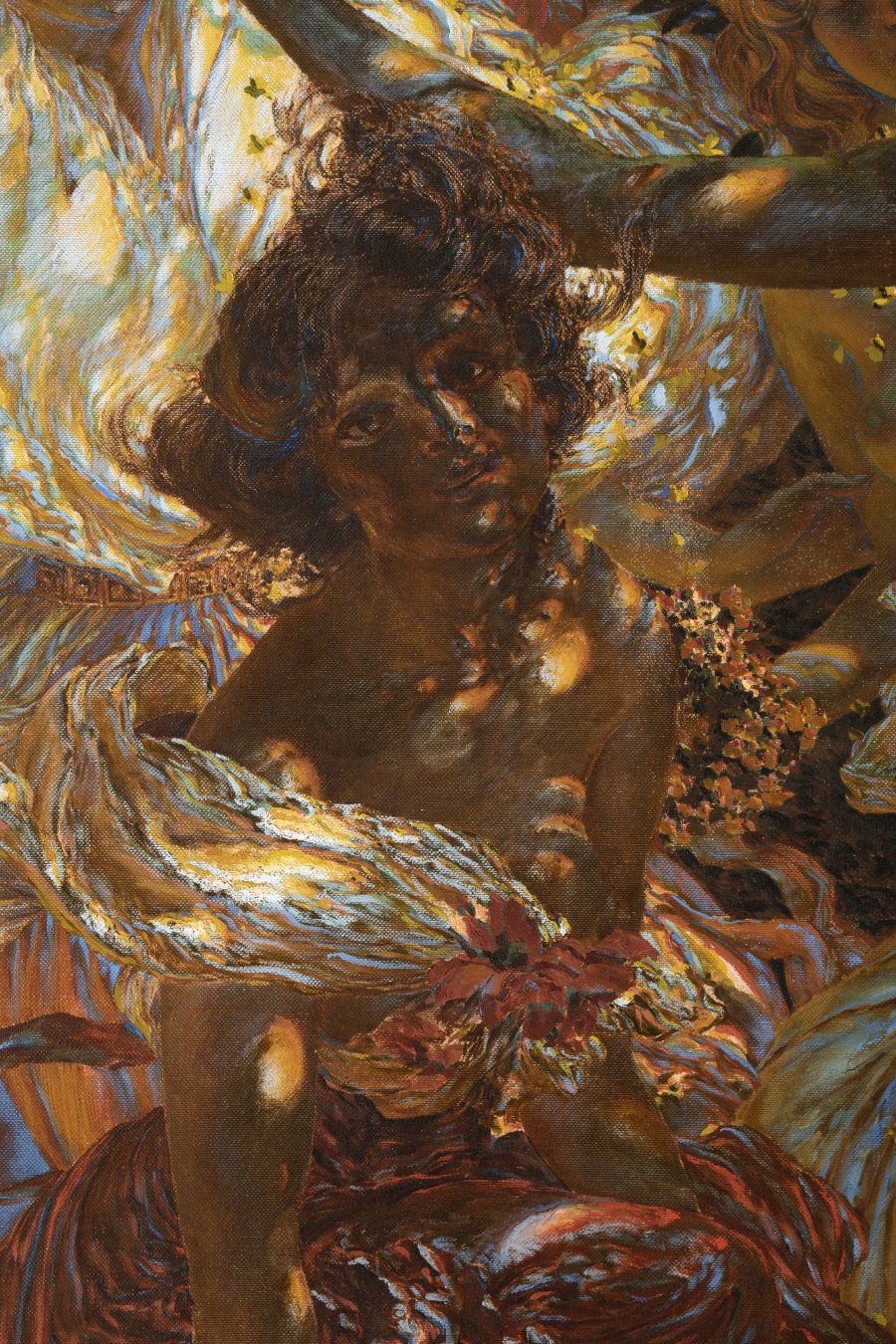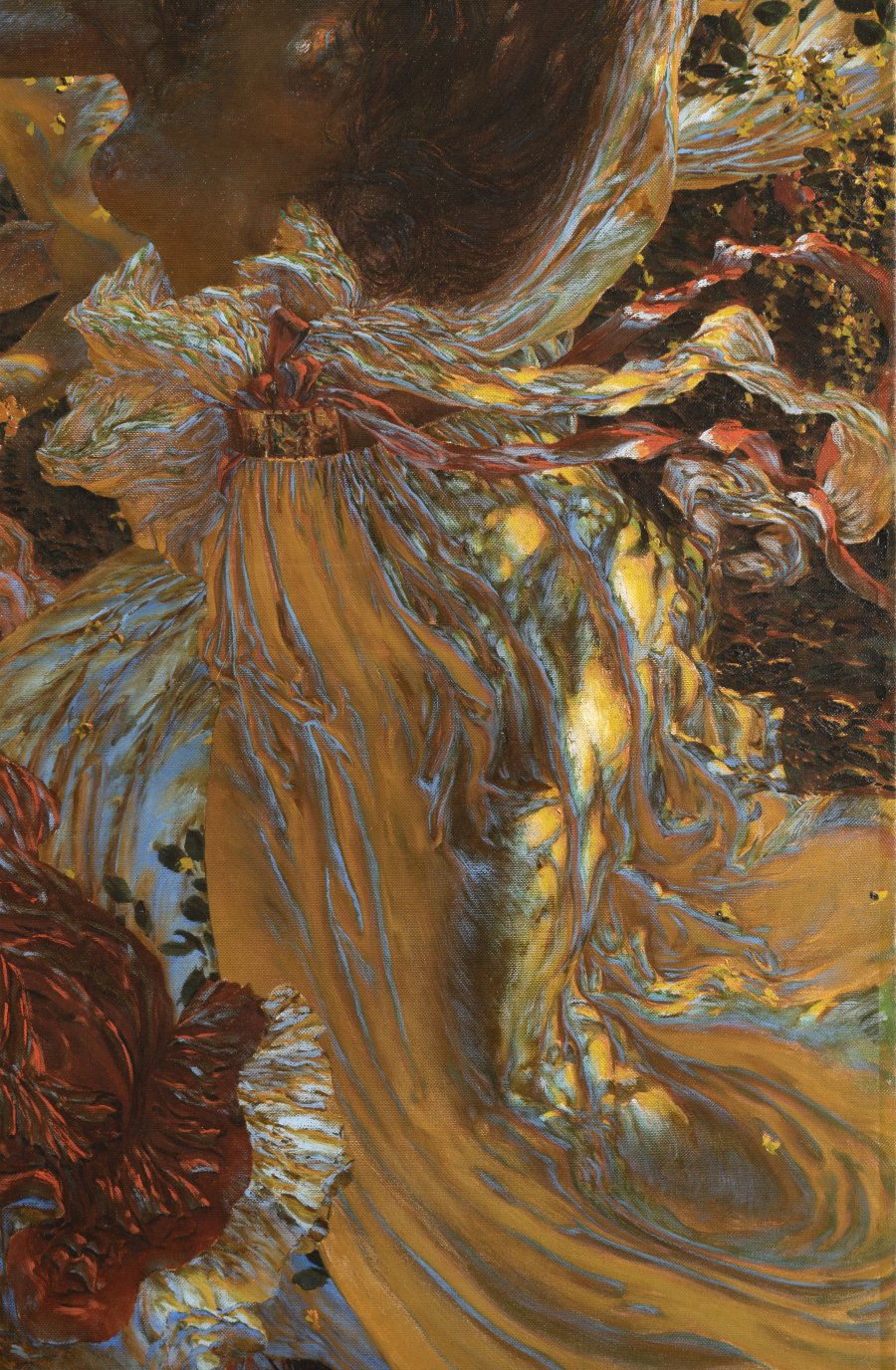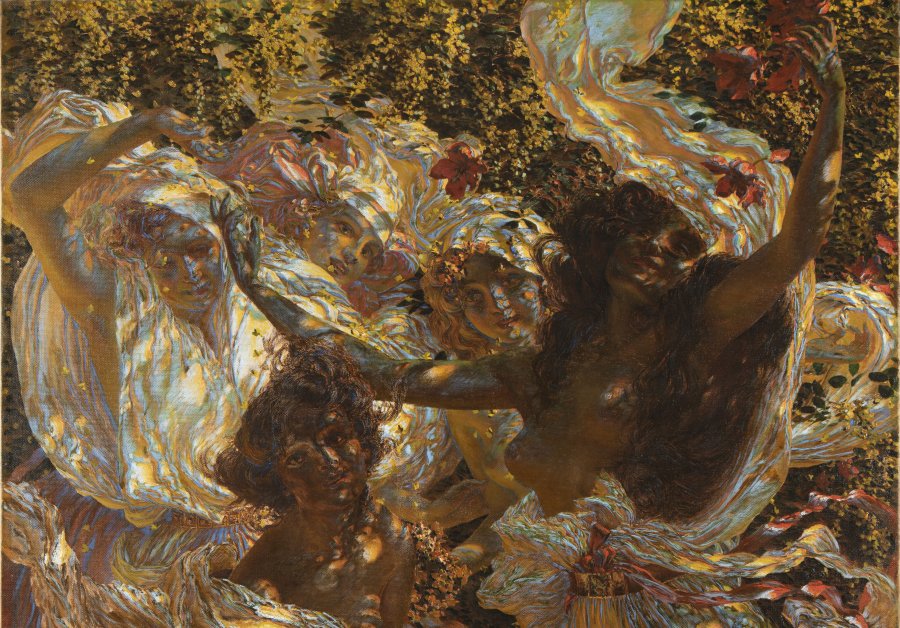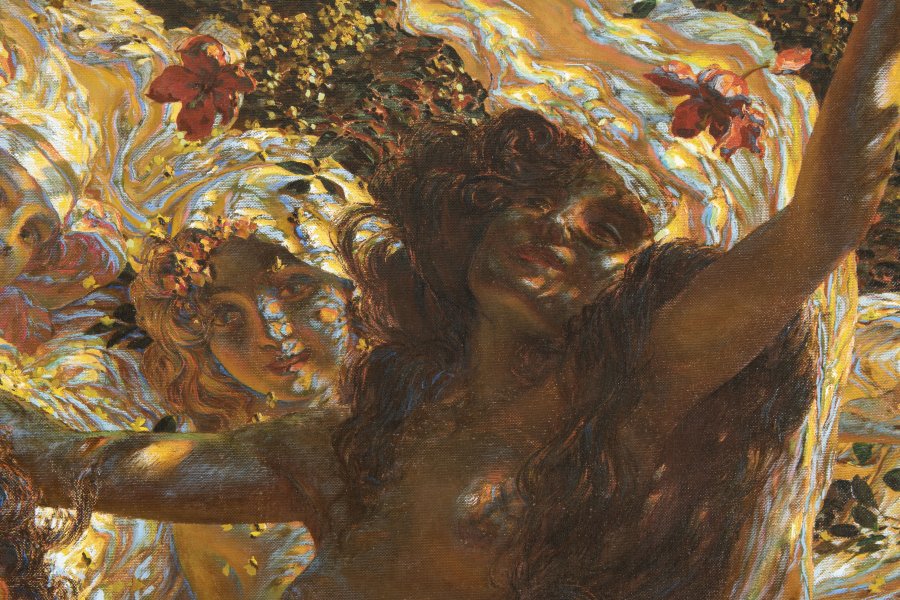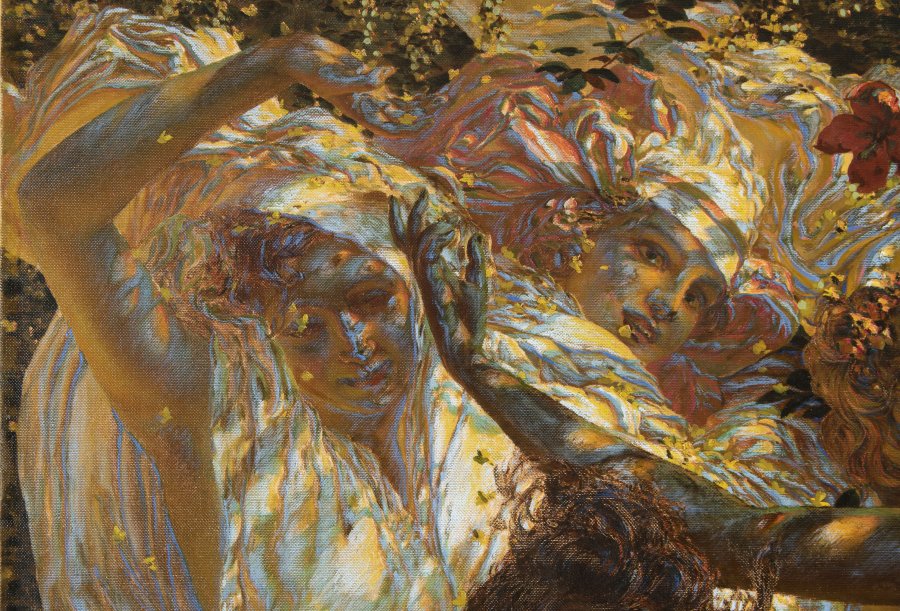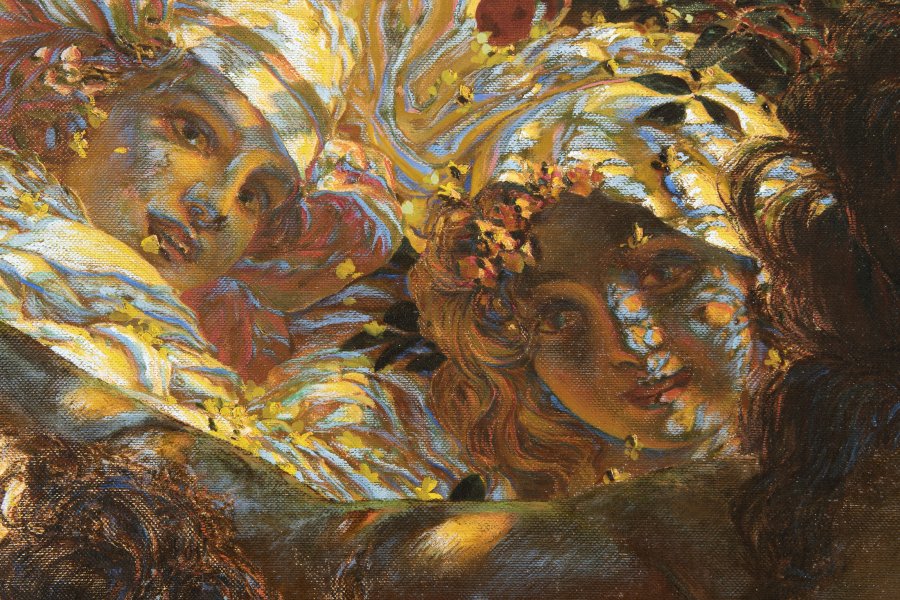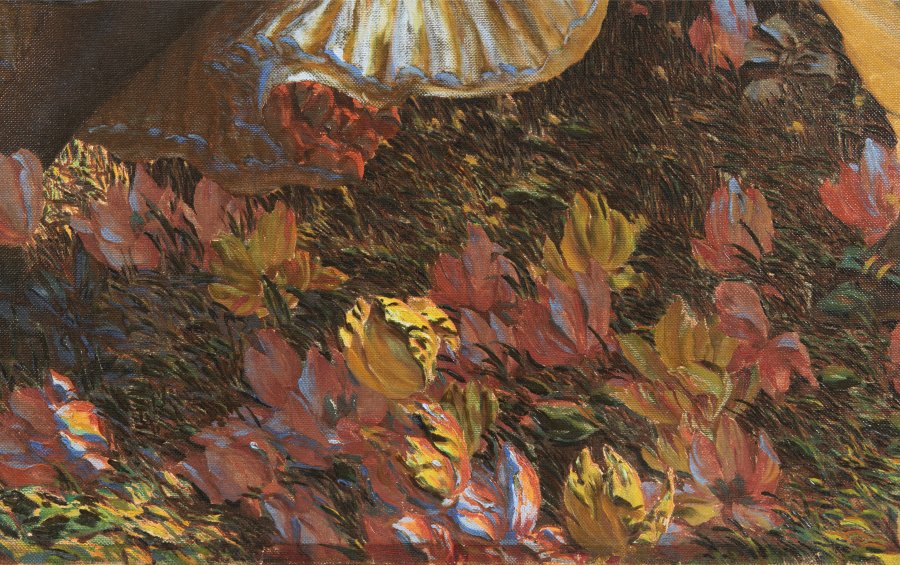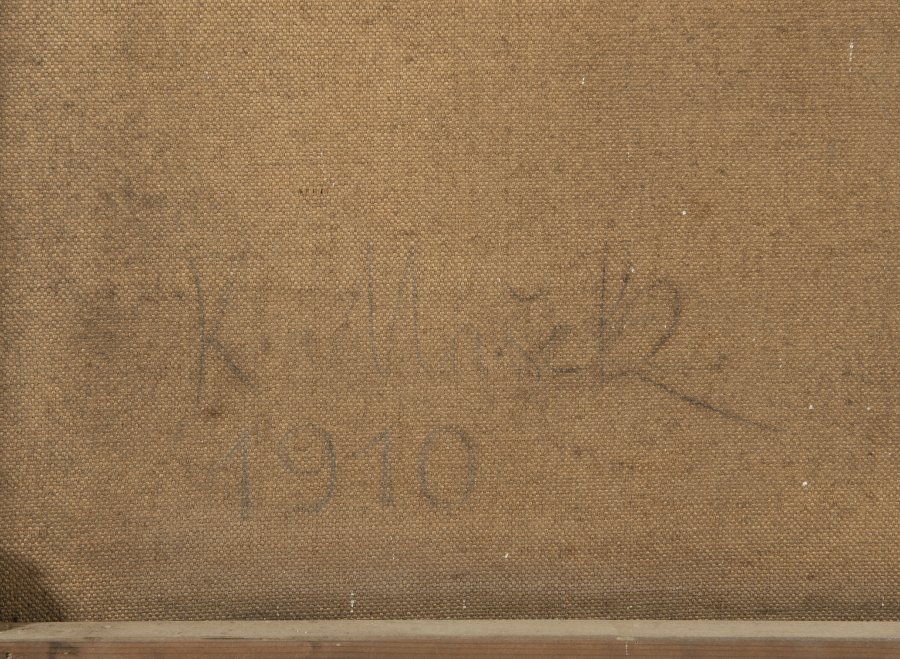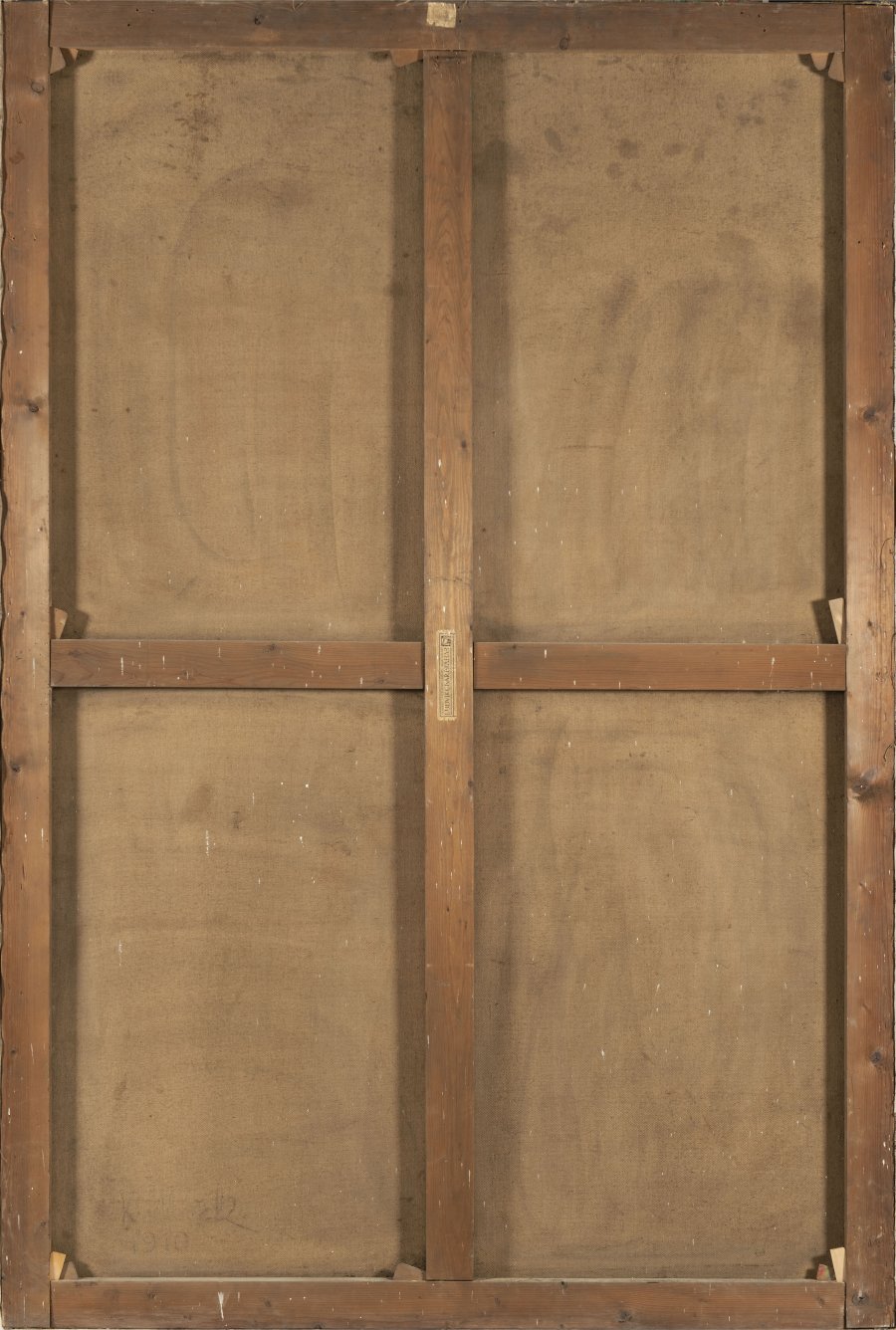Lot 71
PLAY OF SUN STREAKS
1910
oil on canvas
230 x 158 cm (h x w)
signed and dated verso: K. Mašek / 1910
| 152 174 €
| 265 217 €
The play of sunspots belongs to Mašek's publicly hidden work after the 1897 exhibition, when he became the target of criticism from young modernists and withdrew into seclusion. He continued to create public commissions, but also devoted himself to non-public free creation. Mašek himself apparently valued the painting, as it occupied a prominent place in his studio opposite the staircase. The picture is very different from Maška's public contracts, which are noticeably more conservative. Girls dancing in colorful geysers of illuminated veils are a manifestation of a light beam in motion. A shimmering glow penetrates the crowns of the trees, reflects off the undulating surfaces, and refracts the light to build swirling volumes and gradations of color. Here, Mašek understood the optics of colors in detail - in black he allows the colors to be completely absorbed, on the contrary, no white light is completely white, but ripples in color depending on how it is reflected from the flying veils. It shows the sunbeam in its basal characteristic as the building block of the perceived world, of all shapes, colors and life. Rainbow flashes are fleeting reflections of light in raindrops, butterfly wing scales, seashells and gems. Dancing and carefree fairies in hastily tied skirts seem to have seized a brief opportune moment to perform a concert of light among the blooming oleanders. The depicted girls have one peculiarity - they are variants of portraits of Mašek's teenage daughter Zdenka. Until the publication of Karolina Fabelová's monograph in 2002, Karel Vítězslav Mašek belonged to the "forgotten" artists. At the same time, he quickly became a personality among young Czech painters who headed to Munich in the 1880s, dissatisfied with the level of teaching at the Prague Academy. In 1887, he continued to Paris with his friend Alfons Mucha. Although he only stayed there for one year, after his return to Prague he surprised the audience with his paintings, in which critics of the time equally appreciated the modern work with light. The work includes expert opinion by PhDr. Petr Wittlich, CSc.
Published:
Český svět, 1927. Volume XXIII, issue 45.
Fabelová, K.: Karel Vítězslav Mašek, 2002. Eminent, pp. 107, 111.
More works from auction
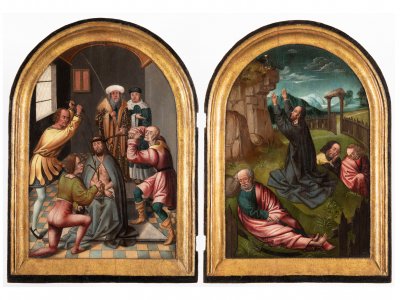
Lot 1 ALTAR WINGS
Starting price60 000 CZK | 2 609 €
Price realized
180 000 CZK | 7 826 €
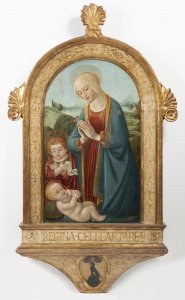
Lot 2 MADONNA WITH JESUS AND ST. JOHN THE BAPTIST
Starting price800 000 CZK | 34 783 €
Price realized
1 700 000 CZK | 73 913 €
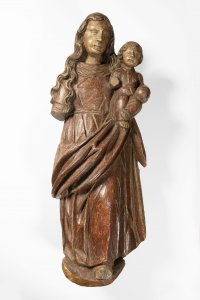
Lot 3 MADONNA WITH CHILD
Starting price45 000 CZK | 1 957 €
Price realized
50 000 CZK | 2 174 €
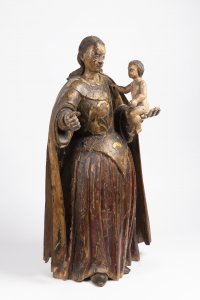
Lot 4 MADONNA WITH A CHILD
Starting price45 000 CZK | 1 957 €
Price realized
50 000 CZK | 2 174 €
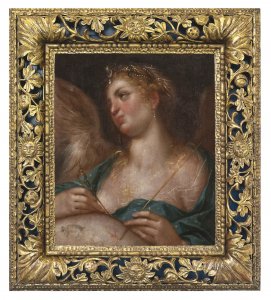
Lot 5 URANIA
Starting price180 000 CZK | 7 826 €
Price realized
370 000 CZK | 16 087 €
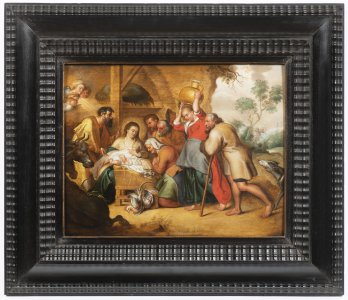
Lot 6 ADORATION OF SHEPHERDS
Starting price120 000 CZK | 5 217 €
Price realized
120 000 CZK | 5 217 €
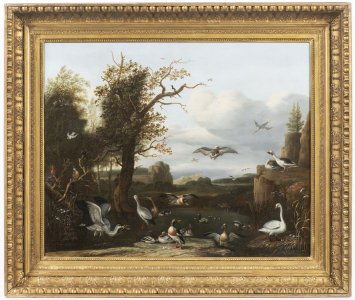
Lot 7 ALLEGORY OF AIR
Starting price55 000 CZK | 2 391 €
Price realized
110 000 CZK | 4 783 €
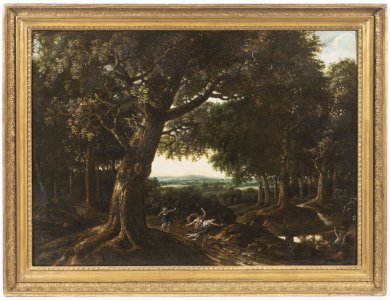
Lot 8 HUNTING DIANA
Starting price55 000 CZK | 2 391 €
Price realized
55 000 CZK | 2 391 €
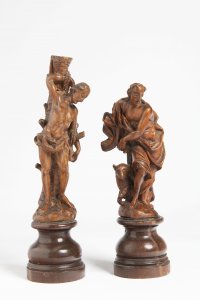
Lot 9 TWO BAROQUE SMALL SCULPTURES
Starting price35 000 CZK | 1 522 €
Price realized
70 000 CZK | 3 043 €
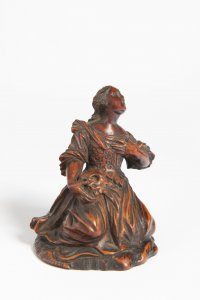
Lot 10 SAINT MARY MAGDALENE
Starting price12 000 CZK | 522 €
Price realized
20 000 CZK | 870 €
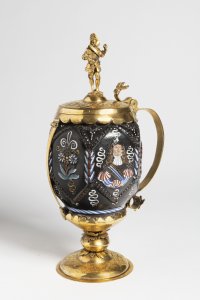
Lot 11 CERAMIC TANKARD IN GILDED MOUNTING
Starting price40 000 CZK | 1 739 €
Price realized
42 000 CZK | 1 826 €
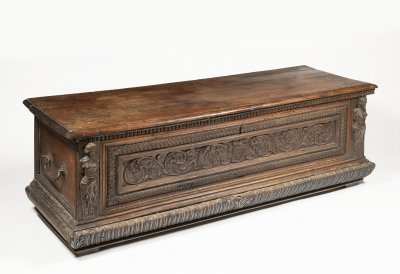
Lot 12 A MANNERIST CHEST
Starting price55 000 CZK | 2 391 €
Price realized
70 000 CZK | 3 043 €

